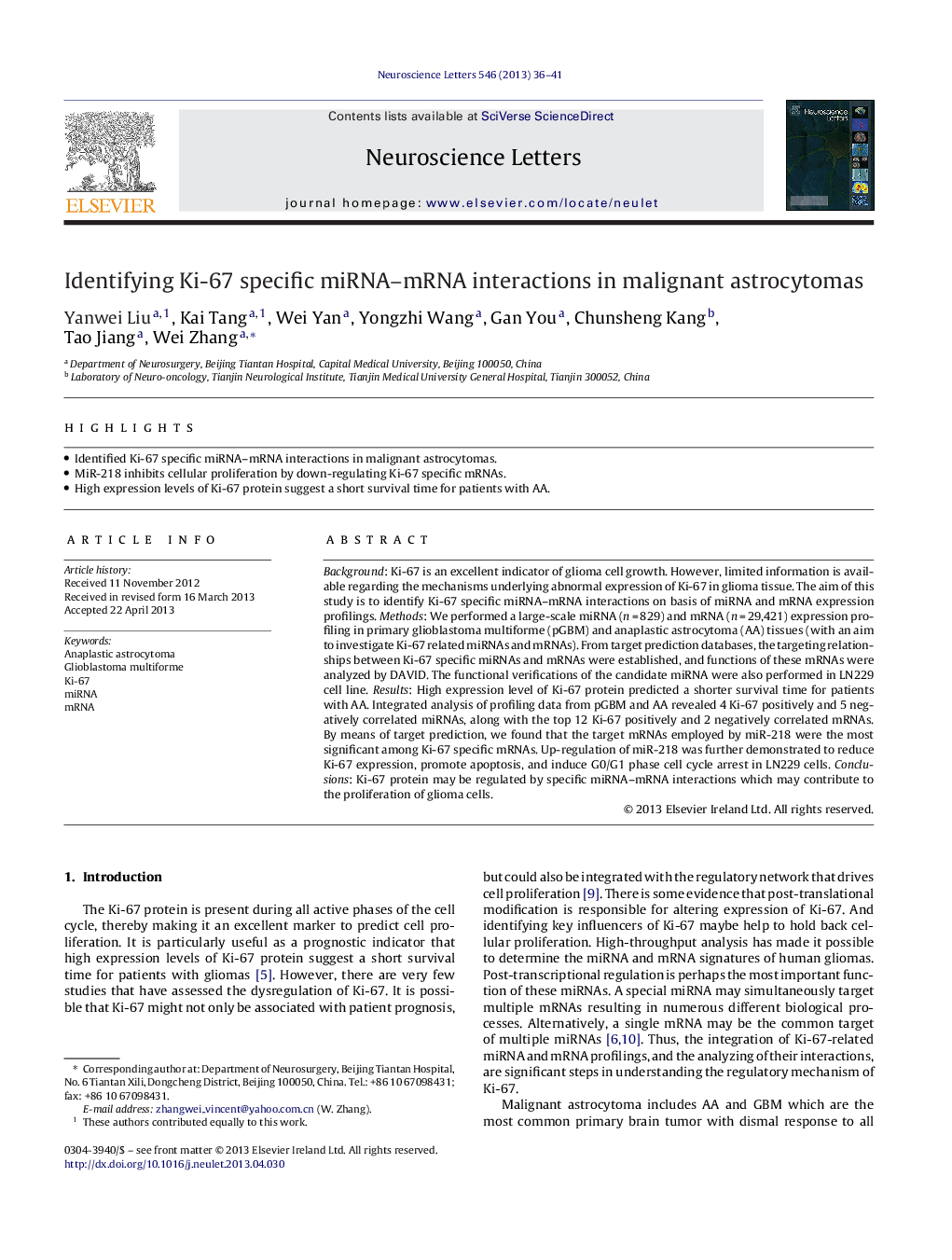| Article ID | Journal | Published Year | Pages | File Type |
|---|---|---|---|---|
| 6283298 | Neuroscience Letters | 2013 | 6 Pages |
â¢Identified Ki-67 specific miRNA-mRNA interactions in malignant astrocytomas.â¢MiR-218 inhibits cellular proliferation by down-regulating Ki-67 specific mRNAs.â¢High expression levels of Ki-67 protein suggest a short survival time for patients with AA.
Background: Ki-67 is an excellent indicator of glioma cell growth. However, limited information is available regarding the mechanisms underlying abnormal expression of Ki-67 in glioma tissue. The aim of this study is to identify Ki-67 specific miRNA-mRNA interactions on basis of miRNA and mRNA expression profilings. Methods: We performed a large-scale miRNA (n = 829) and mRNA (n = 29,421) expression profiling in primary glioblastoma multiforme (pGBM) and anaplastic astrocytoma (AA) tissues (with an aim to investigate Ki-67 related miRNAs and mRNAs). From target prediction databases, the targeting relationships between Ki-67 specific miRNAs and mRNAs were established, and functions of these mRNAs were analyzed by DAVID. The functional verifications of the candidate miRNA were also performed in LN229 cell line. Results: High expression level of Ki-67 protein predicted a shorter survival time for patients with AA. Integrated analysis of profiling data from pGBM and AA revealed 4 Ki-67 positively and 5 negatively correlated miRNAs, along with the top 12 Ki-67 positively and 2 negatively correlated mRNAs. By means of target prediction, we found that the target mRNAs employed by miR-218 were the most significant among Ki-67 specific mRNAs. Up-regulation of miR-218 was further demonstrated to reduce Ki-67 expression, promote apoptosis, and induce G0/G1 phase cell cycle arrest in LN229 cells. Conclusions: Ki-67 protein may be regulated by specific miRNA-mRNA interactions which may contribute to the proliferation of glioma cells.
